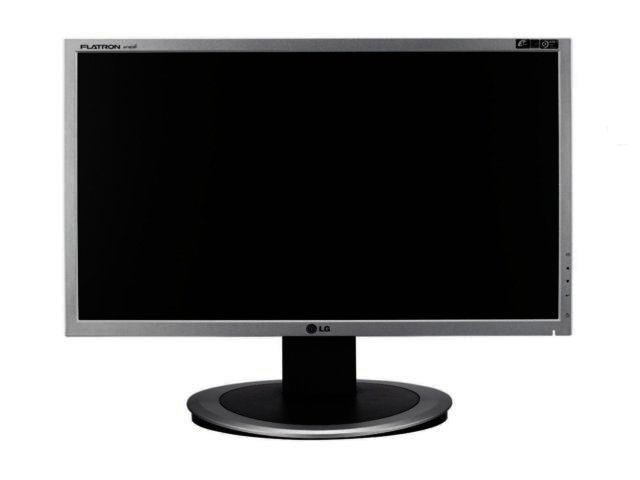A buyers guide to LCD monitors
By Tom Manners 2 July 2010 | Categories: news
It wasn’t too long ago that cathode ray tube (CRT) monitors were the norm on almost every office desk around the globe. They were bulky, awkwardly shaped and severely limited in terms of both size and cost.
Fortunately a technology referred to as LCD (liquid crystal display) revolutionised the market, bringing with it flat panels, innumerable size options and more recently, cost effectiveness.
Now that LCD monitors are a mainstay for the consumer and commercial worlds, the options buyers are faced with when purchasing a panel are numerous and can become confusing.
For this reason we at TechSmart have compiled a LCD monitor buyer’s guide, which details and explains everyone one should consider before purchasing a new display.
Size
All LCD monitors are categorised in inches. The size is based on a diagonal measurement of the screen from the lower corner to the opposite end.
At present the most widely available models range in size from between 17” to 26”. Widescreen displays with a 16:9 aspect ratio (see below), are more commonly available from 19” upwards, are also available and are specifically optimised for video and gaming usage.
Native Resolution
All LCD monitors have a native resolution. This refers to the number of pixels displayed on both the horizontal and vertical lines of the screen (eg: 1920 x 1080).
A monitor which features a resolution of 1920x1080 or higher will be able to support High Definition (HD) playback. Such a resolution is generally found in monitors which are 23” and upwards, although HD support can be found on smaller models.
When utilizing a resolution of 1920 x 1080 it is important to remember that the systems graphical processor (GPU) must be capable of supporting HD. Older or less advanced GPUs will struggle to display at this resolution causing the screen to extrapolate and display a bad picture.
For general use a higher native resolution will have a minimal effect on the performance of the computer. If a display will be used for gaming, movies or multimedia then a higher native resolution will result in more screen real estate and a more crisp picture.
Response Time
LCD technology requires that a current is applied to the liquid crystals at a given pixel which causes it to produce light. Response time is the amount of time it takes to move the crystals in the panel from off to on.
Higher response times can contribute to a blurry picture when bright images are moving on a black background; this is referred to as ‘ghosting’. The lower the response time the sharper the image will be.
Although ghosting was a relatively common problem during the early stages of LCD technology, modern response times are now more standardized, which has served to eliminate the issue. At present the vast majority of LCD displays feature a response time of between 2 ms and 5 ms.
Contrast Ratio
Contrast ratio refers to the measurement between the darkest and brightest colours that the screen is capable of displaying. At times this can be misleading however, as manufacturers will always advertise the contrast ratio for the brightest section on a display as opposed to the unit as a whole.
Generally speaking a contrast ratio of 10 000:1 upwards is typically acceptable for gaming use.
Aspect Ratio
Aspect ratio is the relationship between the horizontal and vertical dimensions of the display. More traditional displays use a 4:3 aspect ratio although current widescreen monitors use a 16:9 or 16:10 ratio, which is the standard for video formats.
Video Ports
The vast majority of modern LCD displays come equipped with a VGA adaptor, which is the widely accepted standard for the vast majority of monitors.
Some do however come equipped with more advanced options such as DVI (digital video interface), HDMI and S-Video. In this event it is important to be sure of what your PC is compatible with before purchasing a monitor.
LCD versus LED
The vast majority of consumers do not understand that the much hyped LED (Light Emitting Diode) displays actually fall into the LCD family.
The only significant difference is the backlight which is used to illuminate the panel. LED displays use hundreds of individual diodes to illuminate the crystals from behind. In contrast, standard LCD monitors are lit by an incandscent bulb which is sitated behind a polarising filter.
This offers an arguably brighter display with deeper blacks. In addition, these screens also have the capacity to be slimmer and are more environmentally friendly.
Overall however, the cost associated with an LED monitor at present is prohibitive considering the minimal benefits it presents over a standard LCD model.
Additional factors
As the LCD market grows, so manufacturers are beginning to offer additional functionality when developing monitors. At present consumers also have the choice to purchase displays which incorporate wireless internet compatibility, such as the
Acer D241H, as well as secondary monitors which are design for use with notebooks, such as the
Samsung LD220Gand
LG Flatron W1930S. Some monitors, such as
LG's Flatron L206WUalso incorporate an option to display the screen both in landscape and portrait mode.
In addition to this several manufacturers have released secondary LCD displays which can be used with notebooks to increase screen real estate.
Most Read Articles

Have Your Say
What new tech or developments are you most anticipating this year?



